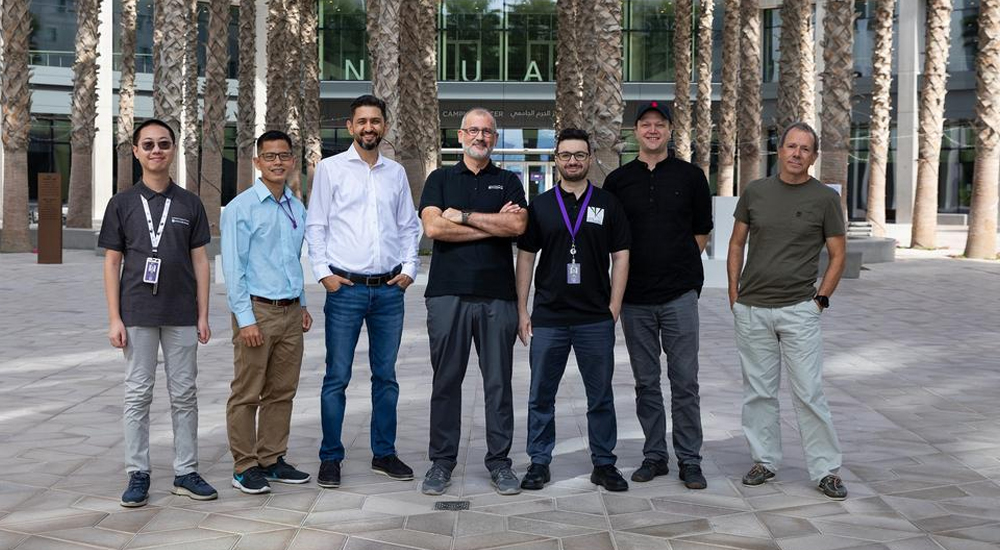NYU Abu Dhabi builds AI programme for mapping boulders and craters for Rashid moon rover

The UAE has officially embarked on its much anticipated lunar mission, making it the first-ever Arab country to reach this milestone. The Mohammad Bin Rashid Space Centre’s lunar rover, Rashid, has launched from Cape Canaveral, Florida, through ispace’s Hakuto-R lander as part of its program HAKUTO-R MISSION 1, with the journey to the moon estimated to take about four months.
Built by Emirati engineers and named in honor of Dubai’s late ruler Sheikh Rashid bin Saeed Al Maktoum, Rashid aims to study various aspects of the lunar’s surface. The four-wheel rover “will conduct numerous scientific tests on the surface of the Moon that will contribute to making qualitative developments in the fields of science, communication technologies, and robotics. Furthermore, the impact of these developments will extend beyond the space sector and into various vital sectors in the national and global economy,” MBRSC stated on its website.
Several institutions in the UAE and across the globe have contributed to the mission. NYUAD was a key contributor to the mission by participating in the development of the rover’s instruments and the relevant data processing procedures, measuring critical properties of the rover, as well as supporting the landing site selection.
Representatives from NYUAD include Lecturer of Physics Milan Bogosavljević, Research Scientist at the Center for Astro, Particle, and Planetary Physics (CAP3) Mohamad Ali-Dib, Professor of Physics and Principal Investigator at CAP3 Francesco Arneodo, undergraduate student Sebastian Kalos, Postdoctoral Associate Laura Manenti, Assistant Professor of Civil Engineering Kemal Celik, Research Scientist Rotana Hay, Research Assistant Bo Peng, Senior Lecturer of Engineering Design Matthew Karau, and CITIES Research Fellow Vince Nguyen.
The rover carries a set of Langmuir probes, which aim to measure the electron sheath above the lunar surface
NYUAD researchers conducted measurements of photo-electric properties of materials being used on the rover surfaces
The team assisted in Artificial Intelligence techniques to map craters and boulders on candidate landing sites
NYUAD Dean of Science Marta Losada commented: “It is a great honor for NYU Abu Dhabi to be a part of one of the UAE’s biggest space-related endeavours to date. Our talented team of faculty, researchers, and students have been working tirelessly in partnership with MBRSC and other key players in the region and worldwide to help turn this vision into a reality. Congratulations to our scientists and engineers on this incredible achievement; we look forward to collaborating on many other national innovations of this scale.”
Rashid, which is equipped with state-of-the-art technologies such as optical wide-field cameras, advanced mobility and communication systems, and being powered using solar panels, also carries a set of scientific instruments which enables it to investigate the lunar surface processes in unprecedented detail.
Much of NYUAD’s responsibilities had begun during the development and manufacturing phases of the scientific instruments. Those comprised the design and calibration of the light-emitting diode (LED) used by the rover’s microscopic camera (CAM-M), as well as the calibration and scientific performance analyses to ensure the camera’s functionality, which is intended to deliver the highest resolution in-situ images of the lunar surface to date.
The rover also carries a set of Langmuir probes (LNG), which aim to measure the electron sheath above the lunar surface. To do so, the effect of the rover’s own surface materials on this lunar sheath needs to be well understood. NYUAD researchers conducted detailed measurements of these photo-electric properties of the various materials being used on the rover surfaces.
Furthermore, the team assisted in leveraging Artificial Intelligence techniques to map the craters and boulders on the candidate landing sites for the HAKUTO-R lander, helping assess the safety of the site and possible paths the rover will take on the lunar surface.
NYUAD’s civil engineering team have been working on the development of a lunar simulant material with locally available minerals. This material mimics lunar soil and thus is crucial for the development and testing of future lunar missions.
“Our work does not stop here. When Rashid rover is safely deployed to the lunar surface, our science team will be supporting the control room in Dubai by analyzing the rover data as it is received. The rover is expected to be functional on the surface of the Moon for only 14 days, so this will be a very busy time. Once the activities on the surface conclude, we will continue to contribute to the in-depth analysis of the imagery and other sensor data taken over the full course of the mission,” said Bogosavljević.





